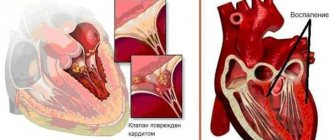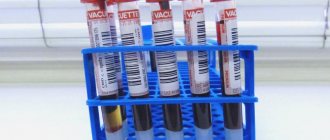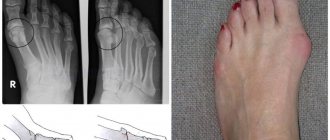Pain and stiffness in various muscle groups are the main symptoms of polymyalgia rheumatica. This disease affects people over the age of 50, the disease predominantly develops among women. Polymyalgia rheumatica is a treatable disease. At the Yusupov Hospital, patients who show signs of illness can undergo diagnostics and, if pathology is identified, receive high-quality treatment.
Polymyalgia rheumatica: ICD-10 code
Polymyalgia rheumatica is included in the International Classification of Diseases, 10th revision. This disease is classified by experts into the category of systemic connective tissue lesions, coded M35. Diseases belonging to this category arise due to hereditary predisposition and the effect of various environmental factors on the body.
In the international classification of diseases, used when making a diagnosis by specialists at the Yusupov Hospital, polymyalgia rheumatica has code M35.3. Therapists at the Yusupov Hospital, together with other specialists, are developing comprehensive programs based on the use of medications, physiotherapy and exercise therapy to treat patients with this diagnosis. The use of modern methods of treatment of polymyalgia rheumatica is aimed at improving the quality of life of patients and eliminating the disease.
3. Symptoms, diagnosis
The clinical picture of polymyalgia rheumatica is dominated by intense pain in the muscles of the pelvis, shoulder girdle and neck. According to one of the most well-known lists of criteria (according to Hamrin), the diagnosis should be established when at least two of the specified zones are affected). In addition, systemic damage to cartilaginous tissue develops (in the hearing organs, larynx, nose, joints), resulting in corresponding symptoms of polyarthritis, difficulty breathing, characteristic hoarseness, and deformation of the ears. Finally, a frequent companion to polymyalgia rheumatica are ophthalmological diseases - all kinds of inflammation (keratitis, uveitis, conjunctivitis, etc.), and in some cases such severe pathology develops as ischemia of the retina and optic nerve, which is fraught with atrophy, detachment and, ultimately, complete blindness. As stated above, along with the own symptoms of polymyalgia, specific Horton's vasculitis often develops.
The diagnosis is established clinically, based on the presence of several (at least three) of the criteria and diagnostic signs listed above.
X-rays of the joints, as well as a biopsy, are not very informative in this case.
About our clinic Chistye Prudy metro station Medintercom page!
Polymyalgia rheumatica: symptoms and treatment of the disease
Polymyalgia rheumatica is of an autoimmune nature, therefore, with this disease, the immune system perceives its own cells as foreign and begins to fight them, resulting in tissue damage. Severe intoxication and fever are the first signs of the disease.
If a patient develops polymyalgia rheumatica, the symptoms of the disease are pronounced:
- intense muscle pain localized in the neck, shoulders, spine, lower back, hips, buttocks. Myalgia appears in patients after being in a stationary position, under static load, and also after waking up;
- limited movement. People with this disease cannot perform basic actions, such as turning their heads or getting dressed;
- weakness and fatigue are noted by many patients with this disease;
- Fever and night sweats occur early in the disease;
- Frequent steps and mincing gait.
Symptoms of polymyalgia rheumatica do not worsen with changes in weather conditions, or with exposure to heat or cold. In addition, experts have not established the infectious nature of the disease. Relieving pain and eliminating symptoms of the disease is one of the areas of treatment for polymyalgia rheumatica. Specialists at the Oncology Clinic select methods and means for patients to eliminate the manifestations of the disease in the shortest possible time.
Polymyalgia rheumatica, the symptoms and treatment of which are interrelated, has maximum manifestations 2 months after the onset of the first symptoms. Some patients self-medicate when pain and muscle stiffness occur, which worsens the course of the disease. During this period, signs of the disease can lead to complete immobilization of a person.
In a doctor's practice, there are clinical syndromes and symptom complexes that do not fit into the framework of established stereotypes, causing serious difficulties in making a diagnosis. These include polymyalgia rheumatica, a rather rare disease, the uniqueness of which is determined solely by clinical manifestations.
Yulia Rozhko, medical expert at State Municipal District No. 4, Grodno. Polymyalgia rheumatica (RP) is an inflammatory disease of the periarticular tissues and synovial membrane, mainly of the shoulder and hip joints, developing exclusively in the elderly and in most cases curable with glucocorticosteroid hormones (GCS); often associated with giant cell arteritis (GCA).
It should be noted that the name of the disease “polymyalgia rheumatica” reflects the tradition of English-language literature to designate pain syndromes associated with damage to the musculoskeletal system with the term “rheumatism” and has nothing to do with acute rheumatic fever.
A special feature of RP is its still unclear relationship with GCA. According to the literature, GCA is detected in 16–21% of cases with RP, and 40–60% of patients with GCA have RP.
Epidemiology
The prevalence of RP in different countries ranges from 4.9–11.1 cases per 100 thousand inhabitants or 12.7–68.3 cases per 100 thousand population aged 50 years and older. The highest incidence is in the countries of Northern Europe and Scandinavia.
RP can be considered a disease of older people. Only isolated cases of the onset of the disease at the age of 45–50 years have been described. Women get sick 2 times more often than men.
Clinical picture
It consists of a combination of signs of damage to the musculoskeletal system and changes in laboratory indicators of inflammation, which are observed in all patients. Also included are general (constitutional) violations that occur frequently, but not constantly.
The disease is characterized by an acute onset against the background of complete health. Sometimes clinical manifestations of the disease are preceded by an increase in ESR or prolonged fever. In some patients, the full, detailed clinical picture of RP does not develop immediately, but after several days and even weeks from the onset of the disease. A debut involving the area of only one joint or neck is possible.
Signs of damage to the musculoskeletal system
Proximal pain syndrome involving the neck is identified, characteristic of all patients. Distal clinical manifestations are less common. Proximal pain syndrome is manifested by pain in the shoulder joints and adjacent (proximal) shoulders, neck, hip joints, buttocks and proximal thighs. All patients have 100% symmetry of the lesion. With RP, at least two of three areas must be involved in the process: the shoulder, pelvic girdles and neck. Pain in RP is usually constant and severe, intensifies with exercise and decreases with rest.
There is a discrepancy between the severity of pain in patients and the very scarce data from an objective examination. When palpating the muscles, pain is not detected or is mild. There is no thickening or muscle atrophy. This pathology is also characterized by a feeling of stiffness that occurs not only after waking up in the morning, but also after any period of rest. Pain and stiffness in RP are associated with impaired movement in the shoulder, hip joints and cervical spine.
Distal clinical manifestations of RP include peripheral arthritis involving the wrist, knee, sternoclavicular joints, small joints of the hands and feet, alone or in combination. As a rule, mono- or oligoarthritis occurs, often asymmetrical. The severity of arthritis is usually mild. There are no radiological changes in the joints. Only in some cases can the process become chronic. GCS therapy is characterized by high efficiency.
Constitutional symptoms are present: low-grade fever, fatigue, asthenia, anorexia, weight loss of more than 10% is observed in 40–50% of patients. But the disease can occur without constitutional symptoms.
Laboratory signs of inflammation
An obligatory sign of RP, observed in almost every patient in the active phase of the disease, is an ESR above 40 mm/h. In addition, there is an increase in other nonspecific indicators of RP activity: the level of C-reactive protein, fibrinogen, alpha-2-globulins, interleukin-6. As a rule, the hemoglobin level decreases, but not below 90 g/l, anemia is normochromic, normocytic in nature.
Diagnosis
The most widely used criteria are those developed by the European PC Study Group. The criteria proposed in 1979 by A. Bird et al. are considered classic:
- bilateral shoulder pain and/or stiffness;
- reaching the peak of the disease in less than 2 weeks;
- ESR at the onset of the disease is more than 40 mm/h;
- the duration of morning stiffness is more than 1 hour;
- age of onset of disease over 65 years;
- depression and/or weight loss;
- bilateral upper extremity tenderness.
The diagnosis of RP is reliable if at least 3 of any signs are present.
In some cases, diagnosis is difficult, especially at the onset of RP, when there is still no detailed clinical picture of the disease. Sometimes proximal pain syndrome is preceded by prolonged fever or an asymptomatic increase in ESR.
It is important to remember that when diagnosing RP, it is necessary to exclude a number of diseases that occur with similar pain syndromes: rheumatoid arthritis, seronegative spondyloarthropathy, remitting seronegative symmetrical synovitis, multiple myofascial syndromes, polymyositis, paraneoplastic syndrome with hidden tumors.
The following variants of the course of RP are distinguished:
- classic, when polymyalgia is combined with arthritis and GCA;
- isolated, i.e. without GCA and without joint damage;
- steroid-independent, in which all typical clinical manifestations of the disease are relieved by NSAIDs;
- torpid, when a standard dose of prednisolone does not lead to complete elimination of myalgia, although it noticeably reduces their severity;
- The “silent” variant is perhaps the most difficult to diagnose, which is characterized by the absence of myalgic syndrome and is manifested by asthenia, depression, and laboratory findings.
Treatment
If the existing clinical and laboratory symptom complex meets the criteria for the diagnosis of RP, the patient is prescribed systemic CGS therapy with subsequent assessment of the treatment effect, usually after 2–3 weeks. A good GCS result allows, on the one hand, to avoid a number of additional instrumental examinations, and on the other hand, to confirm the truth of the RP.
Treatment of RP with systemic corticosteroids (prednisolone, methylprednisolone) is divided into a period of suppressive therapy with the achievement of clinical and laboratory remission and a period of slow dose reduction with complete withdrawal of corticosteroids.
In the first period, the daily dose is 15 mg based on prednisolone. For mild cases of the disease, the daily dose may be 10 mg. Patients with RP usually respond well to GCS therapy. However, if clinical and laboratory remission cannot be achieved after 3 weeks, the dose of the drug is increased by 5 mg/day. It is extremely rare that GCS is required at a dose of 25–30 mg/day.
The goal of the second treatment period is to maintain the achieved clinical and laboratory remission against the background of a gradual reduction in GCS intake until their complete withdrawal. The dose of prednisolone is reduced extremely slowly, by 1/4 tablet every 1–2 weeks under the control of laboratory markers (ESR, CRP). The doctor’s competence lies in the ability to maintain a balance between the rate of reduction in the dose of GCS and the possibility of exacerbation of RP. The total duration of taking GCS with their gradual withdrawal usually does not exceed 2 years.
Currently, experience is accumulating in the combined use of GCS and cytostatic drugs or biological agents. However, the results obtained do not allow us to clearly judge the advantage of the combined use of these drugs.
The prognosis for life with RP is favorable. Remission occurs spontaneously in all patients as a result of GCS therapy. However, combination with GCA significantly worsens the outcome of the disease.
Patient (70 years old). Since 2021, she has complained of pain in the joints of the upper and lower extremities, which intensifies with movement. I took NSAIDs. In 2021, her health worsened, she complained of pain in the joints of the hands and feet, wrist, elbow, shoulder, knee joints, swelling, limitation of movements in the joints, stiffness in the morning for about an hour, pain in the muscles of the shoulder girdle, hips, severe muscle weakness , fatigue. While taking methylprednisolone 16 mg/day, she noted positive dynamics, joint pain decreased.
The examinations were carried out in an outpatient setting:
- UAC (from 03/12/2020): er. 3.26, Hb 102, leuk. 21.3, tr. 453, ESR 64; glucose 5.84.
- BAC (from 03/14/2020): urea 5.6, creatinine 80, cholesterol 7.2, LDL 2.85, TG 2.09, CRP 92.5, RF 16, ASLO 155, bilirubin 13.8, AST 13, ALT 20, amylase 80, iron 12.5, uric acid 0.19.
- UAC (from 04/23/2020): er. 4.13, Hb 113, leuk. 14.52, tr. 558.9, ESR 64.
- X-ray (dated 04/25/2020): X-ray signs of arthrosis-arthritis of the interphalangeal and metacarpophalangeal joints. Osteoporosis of the metacarpal bones. X-ray signs of DOA stage 2. at both sides.
- Ultrasound of the thyroid gland and lymph nodes (dated April 25, 2020): lymphadenitis of the cervical lymph nodes. Ultrasound of the VO: diffuse changes in the pancreas, chronic pyelonephritis, stage 2 nephroptosis. bilateral.
- UAC (from 05/25/2020): er. 4.14, Hb 108, leuk. 13.63, tr. 558.9, ESR 60, p2s43e1m9l45.
- Consultation with a rheumatologist from 05/27/2020. Diagnosis: reactive arthritis, activity 3 in combination with osteoarthritis of the elbows, knees and small joints of the hands. NFS 2. Polymyalgia rheumatica (?).
- MDS (?). Recommended: tenoxicam 20 mg once a day, esomeprazole 20 mg once a day, azithromycin 0.5 once a day, topical diclofenac gel, consultation with a hematologist.
- Consultation with a hematologist on 05/31/2020. Additional examination is recommended: FGDS, full blood flow test, feces for occult blood, colonoscopy.
- Consultation with a rheumatologist from 05/31/2020. Diagnosis: reactive arthritis, activity 3 in combination with osteoarthritis of the elbows, knees and small joints of the hands. NFS 2. PAWS. MDS (?). Additional examination recommended: ASSR. Consultation with a chemotherapy specialist for a lymph node biopsy. Levofloxacin 0.5 1 time / day, xefocam 8 mg 2 times / day, omeprazole 20 mg 1 time / day.
- Analysis for ASSR (dated June 18, 2018): negative.
- UAC (from 06/21/2020): er. 4.46, Hb 118, leuk. 11.97, tr. 329, ESR 59, reticulocytes 8.
- Consultation with a rheumatologist on June 26, 2020. Diagnosis: polymyalgia rheumatica, activity 3. Primary osteoarthritis of the elbows, knees and small joints of the hands. NFS 2. Vertebrogenic cervicobrachialgia on the left, pain syndrome. MDS (?). Recommended: methylprednisolone 16 mg once a day.
- UAC (from 07/12/2020): er. 4.57, Hb 121, leuk. 39.4, tr. 972, ESR 30, p1s31e1m3l64.
- BAC (dated July 10, 2020): CRP 5.7, RF 9.0, uric acid 0.34.
- UAC (from 07/18/2020): er. 4.93, Hb 133, leuk. 43.31, tr. 473, ESR 32, CPU 0.81, p6s17e1m3l73.
- Gene typing (07/19/2020): the Bcr-Abl mRNA mutation of the chimeric gene was not identified.
- UAC (from 07/30/2020): er. 4.67, Hb 127, leuk. 38.76, tr. 224, ESR 20, CPU 0.82, p5s24e1m3l67.
- Myelogram (08/02/2020): bone marrow is moderately rich in cellular elements. Lymphocytosis. The red germ of hematopoiesis is narrowed. No atypical cells were found.
- Consultation with a hematologist from 08/03/2020. Diagnosis: white blood cell disorder, unspecified. Directed to IFT at the Research Center for Surgery, Transplantation and Hematology.
- UAC (from 08/14/2020): er. 4.83, Hb 132, leuk. 34.13, tr. 370.
- IFT: in a peripheral blood sample, ~61.6% of clonal B-lymphoid cells with a phenotype characteristic of CLL are immunophenotypically detected.
- Consultation with a hematologist from 08/20/2020. Diagnosis: chronic lymphocytic leukemia, art. A.
- Clinical diagnosis: Polymyalgia rheumatica, activity 3. Primary osteoarthritis of the elbows, knees and small joints of the hands. NFS 2. Chronic lymphocytic leukemia, art. A.
- Treatment: methylprednisolone 16 mg (¼ tablet) once a day.
Causes of polymyalgia rheumatica
Experts have found that the likelihood of developing polymyalgia rheumatica in older women is twice as high as in men. However, the reasons for the development of the pathological process still cause controversy among specialists.
According to one theory, the development of the disease is caused by viral pathogens, since patients have antibodies to respiratory syncytial virus and adenovirus. Proponents of another theory believe that the pathological process is caused by genetic disorders. Polymyalgia rheumatica, the symptoms and treatment of which are determined by the degree of tissue damage, can develop under the influence of factors:
- Horton's disease;
- infectious diseases caused by parainfluenza and adenoinfluenza viruses;
- prolonged stress;
- hypothermia.
Comprehensive diagnostics carried out in the therapy clinic of the Yusupov Hospital are aimed at establishing the causes of the pathological process. Effective therapy for this disease should include not only symptomatic treatment, but also measures to eliminate the causes of the disease and provoking factors. Specialists at the Yusupov Hospital organize regular interaction with patients to establish the nature of the course of the disease and the effectiveness of treatment measures.
1.General information
If the medical name of a disease contains the word “rheumatic” or “rheumatoid,” this almost always means a pathology of the connective tissue and/or musculoskeletal system, in particular the joints. There are many such diseases known, they are weakly associated with external factors or not at all, and the formidable parental warning that was heard in almost every family fifty years ago - “If you walk in sneakers in the cold, you will get rheumatism!” - is only partly is justified.
The term “polymyalgia rheumatica” literally means “multiple muscle pain of rheumatic origin.” Not everything is known about this disease yet; There are also no precise statistics on prevalence. However, it is known that polymyalgia rheumatica is associated with some etiopathogenetic connection with Horton's disease (one of the variants of systemic vasculitis, or inflammation of blood vessels - in this case, the branches of the carotid and temporal arteries). It is also known that polymyalgia rheumatica almost always begins in the second half of life (after the age of 50) and affects women more often than men.
A must read! Help with treatment and hospitalization!
Diagnosis of polymyalgia rheumatica
When diagnosing and treating patients diagnosed with polymyalgia rheumatica, clinical recommendations are used by specialists at the Yusupov Hospital. Highly qualified rheumatologists use European equipment and modern methods to identify the pathological process.
Diagnosis of rheumatological polymyalgia is based on traditional studies and modern diagnostic methods:
- examination of the patient aimed at identifying hepatitis B and C;
- blood chemistry;
- clinical urine and blood tests;
- computed tomography of the lungs;
- X-ray examination;
- magnetic resonance imaging of joints;
- ultrasound examination of internal organs.
If a patient develops a torpid course of polymyalgia rheumatica, then the diagnosis and treatment of the disease are the most difficult. The diagnostic center of the Yusupov Hospital is equipped with high-precision devices for detecting the pathological process at the initial stage. Our specialists have extensive experience in identifying rheumatic diseases and interpreting the results, which allows us to eliminate medical errors. If polymyalgia rheumatica is detected, the patient is offered hospitalization and inpatient treatment.
Polymyalgia rheumatica: treatment
Patients of the Yusupov Hospital who have been diagnosed with polymyalgia rheumatica are offered treatment in a hospital setting. In addition, experienced rheumatologists provide high-quality outpatient care and carry out rehabilitation measures. Treatment of the disease is carried out in several directions:
- taking medications. For this disease, patients are prescribed corticosteroids. The duration of drug therapy can reach one year. In addition, mineral complexes can be prescribed to prevent other diseases of the musculoskeletal system;
- physiotherapeutic procedures allow you to activate metabolic processes in the body and speed up its recovery;
- Physical therapy is used by specialists to restore mobility and range of motion.
Rheumatologists at the Yusupov Hospital recommend that patients with this disease follow a special diet, in which it is not recommended to consume fatty animal products, sweets and other foods rich in carbohydrates.
After treatment at the polymyalgia rheumatica therapy clinic, patients forget about discomfort and stiffness of movement and return to an active life. By making an appointment with a rheumatologist by calling the Yusupov Hospital, during the consultation you can receive answers to your questions and a referral for diagnostics.







